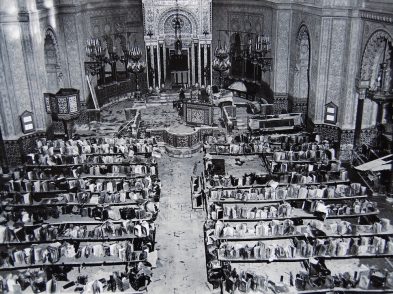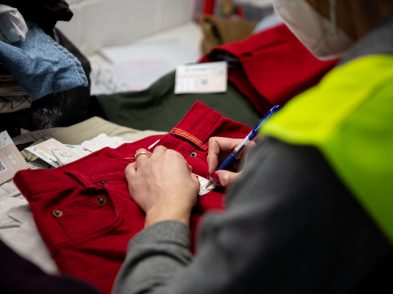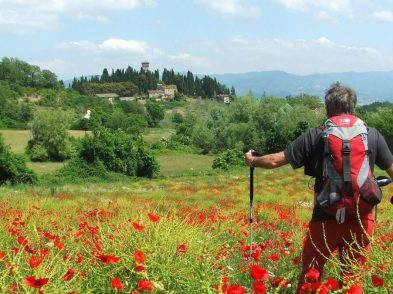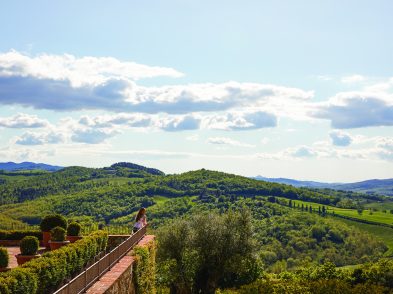A few months ago, I moved to the center of Fiesole, where I quickly discovered that you’re walking uphill literally anywhere you go. On the upside (pun intended), I have the hiking trails of Montececeri as my backyard: nature with vast views over Florence.

Living in Fiesole, you get used to identifying the kinds of people who use the Montececeri trails that span the hillside from Borgunto to Maiano. There are the regular dog walkers, who you sometimes spot wearing their Sunday best because the trail is their backyard, too. There are the weekend visitors, who I proudly help with directions. Then there are the serious hikers, the ones doing the Via degli Dei from Bologna, ejected from the woods into Fiesole wearing their backpacks and walking rain or shine. The rest are people like me, there for exercise and enjoyment, neither fast nor slow. Whoever you meet on the trail, you salutare with a salve or buongiorno.
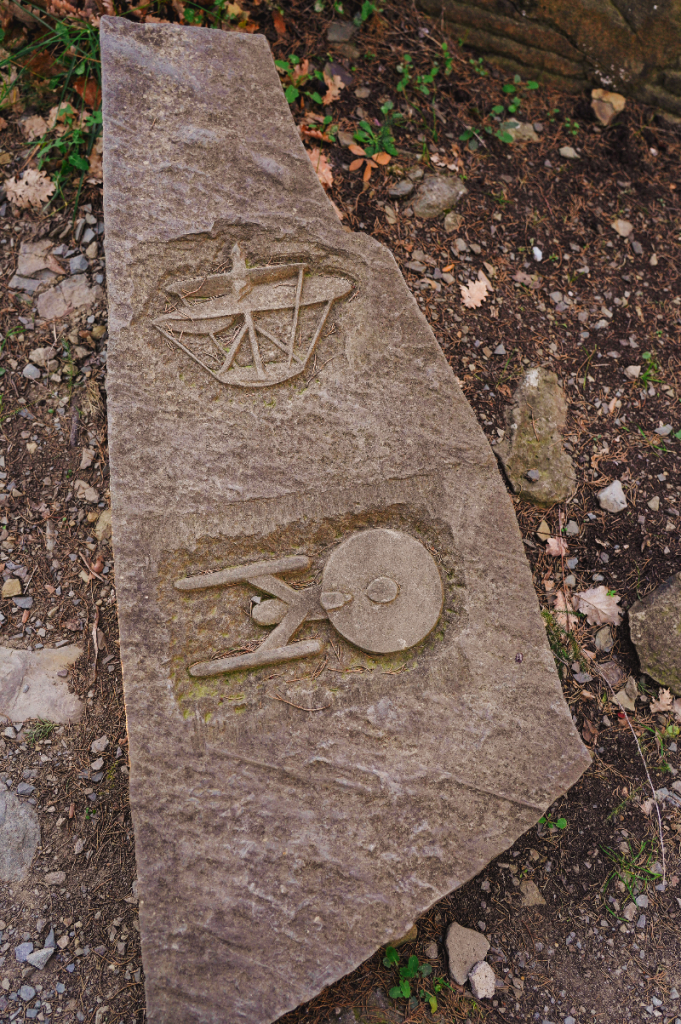

Even before I moved up the hill, Montececeri was my favourite hiking path around Florence because it has an art history connection. (This adds a few stars to anything in my books.) It is from the top of this hill that Leonardo da Vinci tested his first flying machine in 1505, which was based on a bird he saw flying around the same area. His awfully faithful friend and assistant Tommaso Masini agreed to be his test subject, hence becoming the first man to fly about a thousand meters and sustain only minor injuries. Interestingly, Masini was also known as Zorastro da Peretola, indicating the area of Florence where he was born, and although the city’s airport is named for the borgo in which it was located and not for Zorastro (who does get a bit of road, though), I like to think that there’s something connecting Peretola and flight. Incidentally, the Vespucci family of Amerigo fame was also from Peretola: a town of adventurous explorers, perhaps?
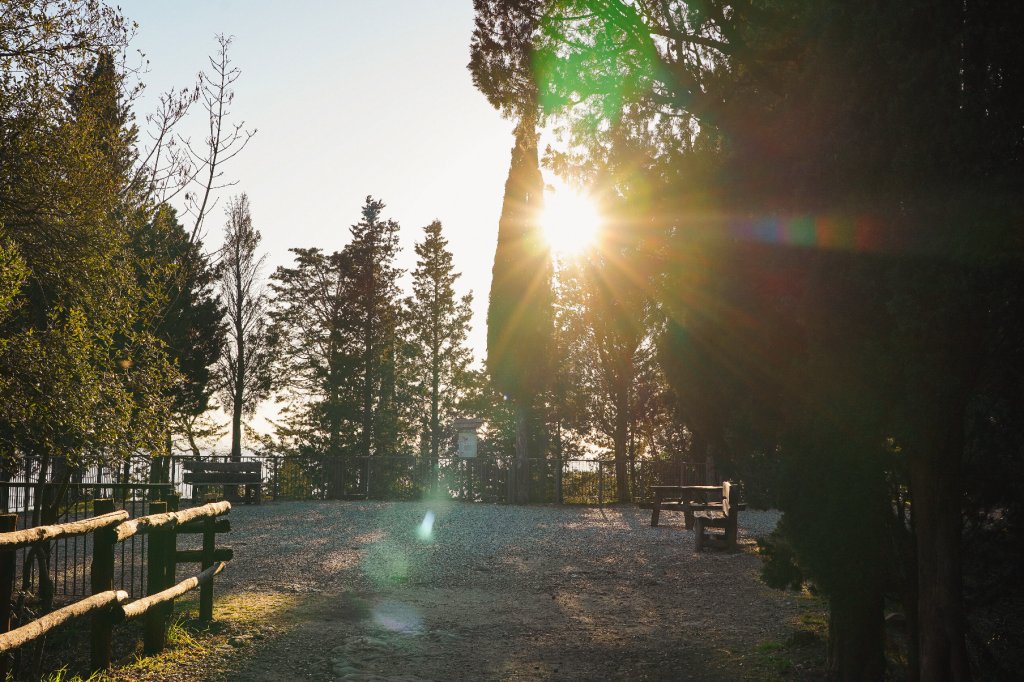
From the hiking trails of Montececeri you can also observe traces of local economic history, for Fiesole has always been a place of stone extraction. The quarries of Braschi and Fratelli Sarti are marked with interesting informational panels that speak, amongst other things, of the close relationship between this work and the inhabitants of Borgunto. Different types of stone were quarried here, but it was perhaps most famous for pietra serena, the dark grey stone used in Florentine architecture for columns and decorations (for example, by Brunelleschi in the churches of San Lorenzo and Santo Spirito). About its origin, Gabriele D’Annunzio wrote in 1903, “that stone that is said to be serene—it originates from Monte Céceri in large quantities…”
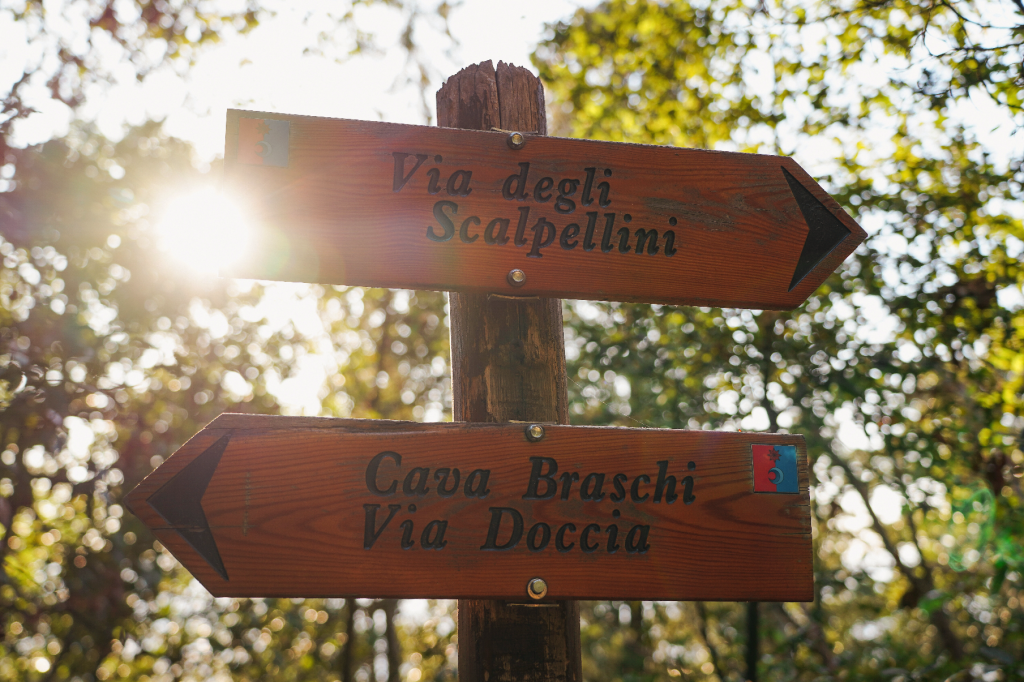
There are three entry points into the Montececeri trails. If your favourite walking direction is uphill and you’re coming from Florence, I suggest the lowest entry. The number 7 bus to Fiesole stops at via Doccia just below the Villa San Michele, A Belmond Hotel. Just a bit up the road you’ll see the path entrance on the right; follow the well-marked trail to the Braschi quarry, then turn left and walk up to a beautiful lookout point over the city. Keep walking up from there past the Sarti quarry towards piazzale Leonardo, which marks the spot of the inventor’s experiment and which happens to feature picnic tables but not much of a view (it’s blocked by trees). You could turn back or you can continue along the path to Prato ai Pini, which is the highest exit of the trails. The little piazza here is named for a much-loved parish priest, Don Alvaro. If you head downhill from here, you can find your way back to piazza Mino da Fiesole and return to Florence by bus.

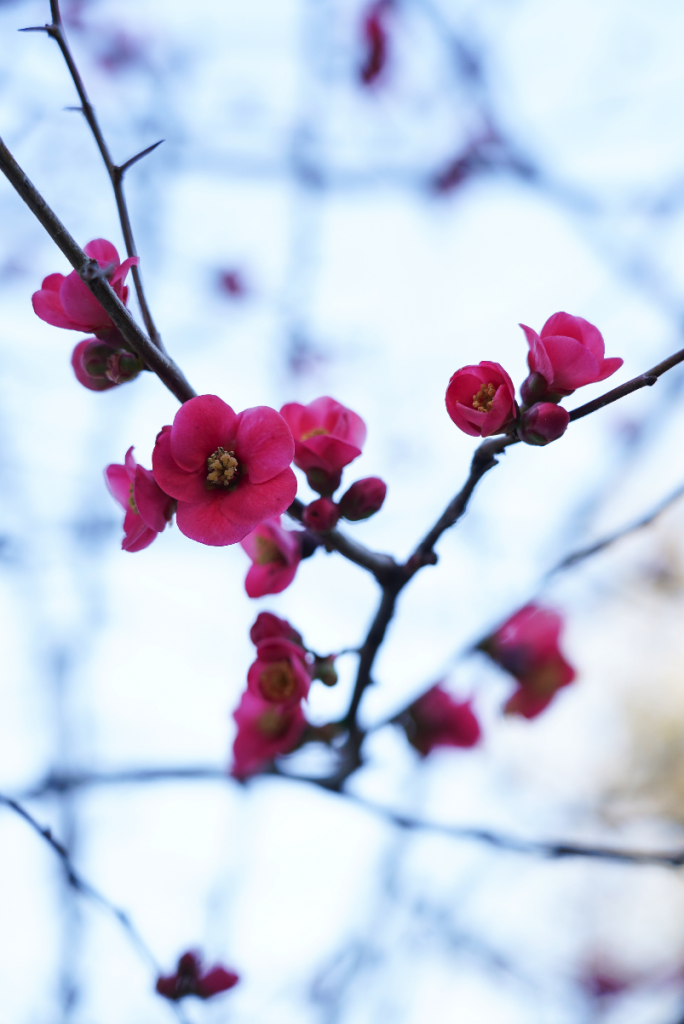
The third entrance is on via degli Scalpellini behind the schools in Borgunto. Entering here offers the hiker a nice four-kilometer circuit—my personal favourite—by taking the route up to piazzale Leonardo, down towards Prato ai Pini, turning right instead of exiting, and right again towards the Braschi quarry, up to the lookout point and back out. There are various intersections in these woods and I’ve explored them all, though I’ve yet to find my way to Maiano (a fallen tree has put an end to that for a while).
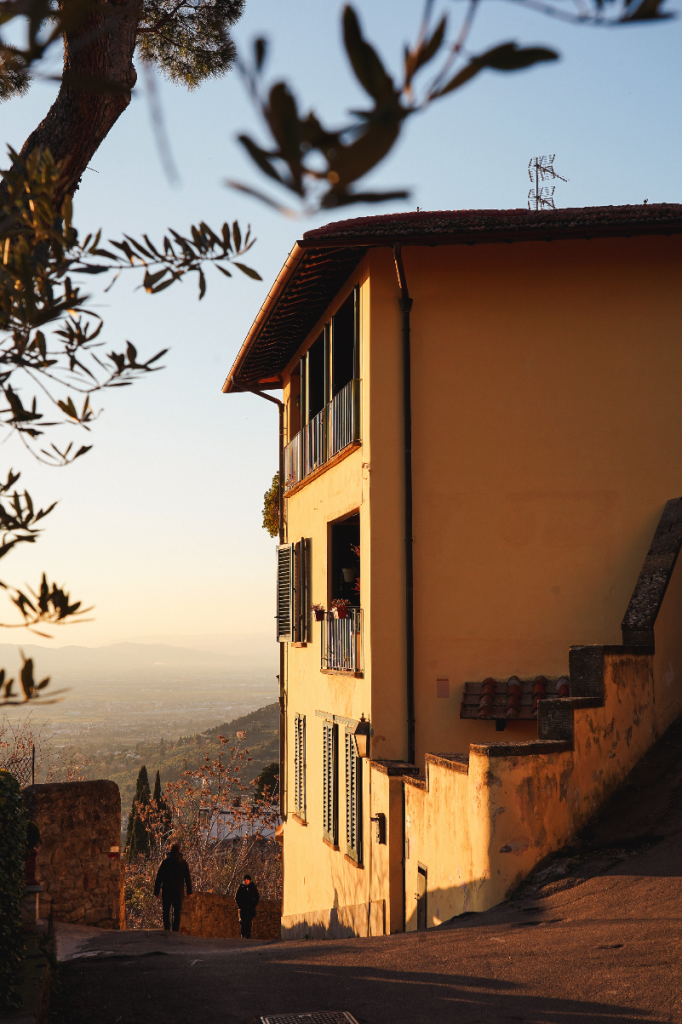

Heading out of the woods and into the center of Fiesole, take in the view from via Verdi, which inspired Frank Lloyd Wright, who rented the house on the corner back in 1910. Perched up on this sunny wall with Florence spread out before me, I’m grateful to live in a place that offers an escape into nature so close to, and indeed tied to, this place of history and human intervention.

